DFI LANParty UT RDX200: ATI’s Crossfire AMD for the Bleeding Edge
by Wesley Fink on October 18, 2005 11:03 AM EST- Posted in
- Motherboards
DFI LANParty UT RDX200: Board Layout
DFI has made sure that you still recognize the LANParty UT box - using the same theme that worked well on their nForce4 series.
Those familiar with DFI LANParty boards will immediately recognize the black color scheme with Dayglo yellow and orange slots and connectors. Some buyers love the color scheme and look for side-window cases and UV lights to show it off. Others wish that DFI used something a bit more sedate. Whatever you think of the color scheme, our past experience has been that underneath the color is an incredibly full-featured motherboard with adjustments not available on any other motherboard. DFI tells us that all capacitors are 100% Japanese to assure the highest quality.
DFI also included Firewire powered by the well-regarded VIA VT6307 chipset. Dual Gigabit LAN is also a feature, but only one LAN port is the faster PCI Express.
DFI has made sure that you still recognize the LANParty UT box - using the same theme that worked well on their nForce4 series.
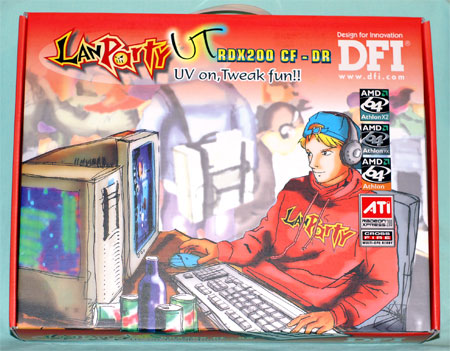
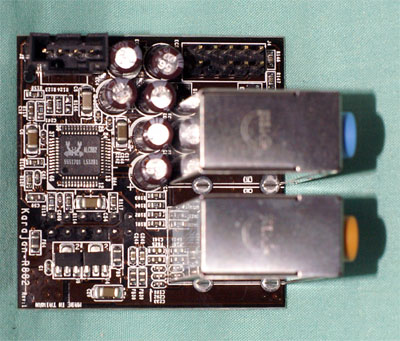

Those familiar with DFI LANParty boards will immediately recognize the black color scheme with Dayglo yellow and orange slots and connectors. Some buyers love the color scheme and look for side-window cases and UV lights to show it off. Others wish that DFI used something a bit more sedate. Whatever you think of the color scheme, our past experience has been that underneath the color is an incredibly full-featured motherboard with adjustments not available on any other motherboard. DFI tells us that all capacitors are 100% Japanese to assure the highest quality.
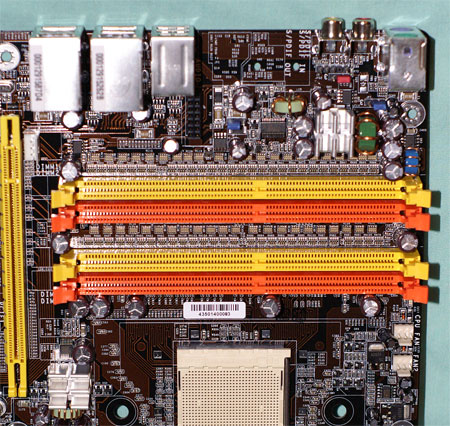


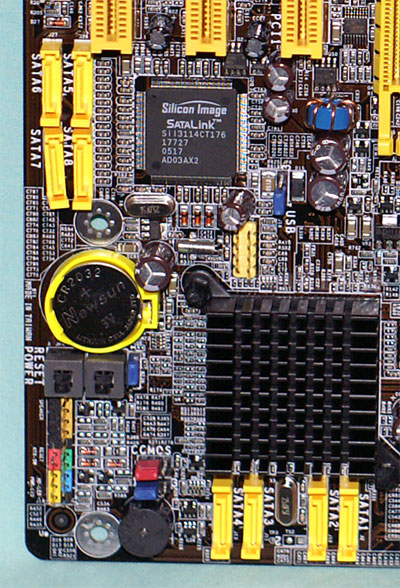
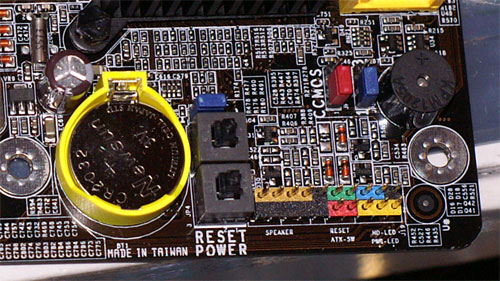
DFI also included Firewire powered by the well-regarded VIA VT6307 chipset. Dual Gigabit LAN is also a feature, but only one LAN port is the faster PCI Express.
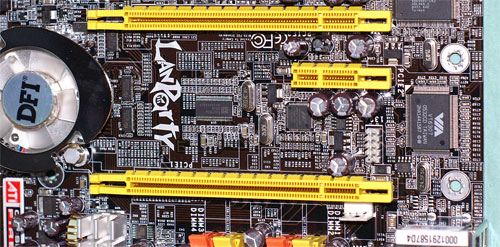


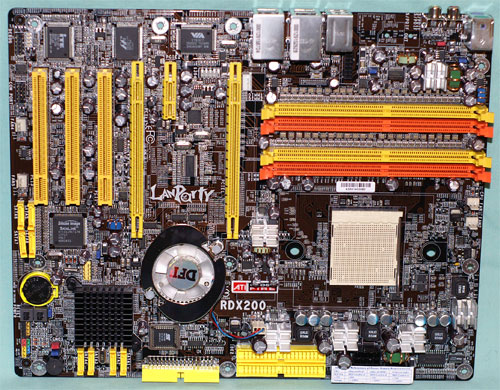








48 Comments
View All Comments
bigtoe36 - Tuesday, October 18, 2005 - link
having tested the RDX200 at the same time as Wesley I am able to confirm that i was able to run cas1.5. Now on the NF4 LP boards oskar enabled what seemed to be cas1.5, infact this option gave no performance increase over the cas2 option. On RDX200 he has though found a significant speed increase by using the 1.5 option.Running OCZ PC4800Plat's with drive srength at 9 and 1.5-2-2-5 timings a 100MB/s increase in available memory bandwidth was seen over setting 2-2-2-5. I was however forced to use 3.1Vdimm to achieve this at 200fsb 1:1. Another point is that BH5 and VX (UTT CH5) would not do cas1.5, it seems to be a samsung TCCX tweak only.
mongoosesRawesome - Tuesday, October 18, 2005 - link
thanks for the infoLeper Messiah - Tuesday, October 18, 2005 - link
Used to be buy an nVidia mobo and an ATi graphics card. Funny how things have changed...but 4DS at 1T is awesome if you aren't OCing your RAM, but 250-2-2-2-7 2T is going to be faster than 203 2-2-2-7-1T.Madellga - Tuesday, October 18, 2005 - link
Thanks for the good review Wesley. One thing I always missed on your reviews was what kind of BIOS settings you used.It took me a long time to get my DFI-NF4 up and running. You know better than anybody that tweaking is time consuming - specially with so many settings on the BIOS.
Make this an habit and keep posting the BIOS settings used on the reviews.
mongoosesRawesome - Tuesday, October 18, 2005 - link
Isn't that integrated into the A64 memory controller and don't the Nforce 4 DFI boards support those DDR speeds?
Wesley Fink - Tuesday, October 18, 2005 - link
The additional ratios are available in the AMD Athlon64 Rev. E Memory Cntroller and can be implemented on any Socket 939 motherboard. However, the BIOS writer has to implement these choices. AMD made them a part of their Reference Board and they will likely find their way to many retail boards. DFI implemented them on the RDX200, but you rarely if ever see these finer ratios actually implemented on nForce4 boards.jr9k - Tuesday, October 18, 2005 - link
2000 points.
Impressive...
until you do some math. 4 dimms at 1T are 2.3% faster than 4 dimms at 2T.
Don't get me wrong, the achievement of running four dimms at 1T is impressive, but the results are not (as we already knew). It's the way of showing things.
Anyway, it is good to see some competition from ATI.
Nice review and nice board
mongoosesRawesome - Tuesday, October 18, 2005 - link
Yea, I agree. A lot of times a big deal is made over only a few percentage points. I would have rather seen FPS in some games. I truly doubt we'd even see 2% in some cases.Spacecomber - Tuesday, October 18, 2005 - link
I had the same sort of reaction to the signifigance of the 1T vs 2T scores. I translated the Aquamark score back into FPS got this.2 DIMM 1T 91fps
4 DIMM 2T 90fps
4 DIMM 1T 92fps
While this capability certainly says good things about DFI's engineering team, I'm not sure that I'd spend a $100 premium on a motherboard just to get this feature.
Overall, this is a board with very good potential, but I wouldn't want to rush out and buy this first release. It sounds like the revision with a different south bridge will be worth waiting for. Hopefully, the price will be mroe in line with the comparable nforce4 boards by then, too.
ksherman - Tuesday, October 18, 2005 - link
I am particularly impressed with the ability to use 4DS DIMMs @ 1T. That is a really nice little feature! Too bad you have to stay near stock speeds... is it possible to do some overclocking, but use divides to keep the memory at 406? or is overclocking the memory the better thing to improve system performance?